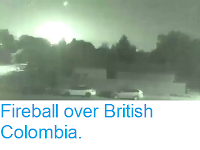The Draconids are one of the most notable annual meteor showers, in some years producing several thousand meteors per hour (like most meteor showers the number of Draconids varies from year to year). The shower is expected to peak on Saturday 7-Sunday 8 October 2017, with best viewing in the evenings on these dates this will b
the same wherever you are on Earth), though visibility will be hampered somewhat by a bright Moon, with peak meteor activity coming directly after the Full Moon on Friday 6 October. The Draconids take their name from the constellation of Draconis, with the meteors appearing to radiate from the mouth of the Dragon, between the stars Eltanin and Rastaban. Since this constellation is very high in the northern sky, the Draconids are an almost exclusively Northern Hemisphere phenomenon, which sightings from south of the equator being quite rare.
The radiant point of the Draconid Meteor Shower. Planetary Society, India.
The shower is caused by the Earth passing through the trail of the Comet 21P/Giacobini-Zinner, and encountering dust from the tail of this comet (for this reason the shower is sometimes known as the 'Giacobinid Meteors').
The dust particles strike the atmosphere at speeds of over 200 000 km
per hour, burning up in the upper atmosphere and producing a light show
in the process. The name 21P/Giacobini-Zinner implies that the comet was the 21st Periodic Comet discovered (a Periodic Comet has an orbital period of less than 200 years) and that it was discovered by Michel Giacobini, who first observed the comet from the Nice Observatory in France in 1900, and Ernst Zinner who observed the comet from the Remeis Observatory in Bamberg, Germany, in 1913.
Image of 21P/Giacobini-Zinner, taken from Kitt Peak Observatory in Arizona on 31 October 1998. Nigel Sharp/NOAO/AURA/NSF.
The Earth does not need to pass close to 21P/Giacobini-Zinner for the meteor shower to occur, it simply passes through a trail of dust from the comet's tail that is following the same orbital path. Comet 21P/Giacobini-Zinner itself visits the Inner Solar System once every 6.6 years, last doing so in 2012, on an eccentric orbit tilted at 31.9° to the plane of the Solar System, that takes it from 1.03 AU from the Sun (103% of the average distance at which the Earth orbits the Sun) to 6.00 AU from the Sun (6 times as far from the Sun as the Earth,slightly outside the orbit of Jupiter). The comet is next expected to visit the Inner Solar System in 2018, reaching about 58 434 00 km (0.39 AU) from Earth on 11 September of that year.
The calculated orbit and position on 6 October 2017 of Comet 21P/Giacobini-Zinner. The Sky Live 3D Solar System Simulator.









